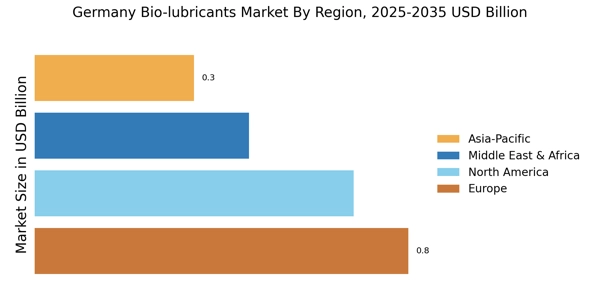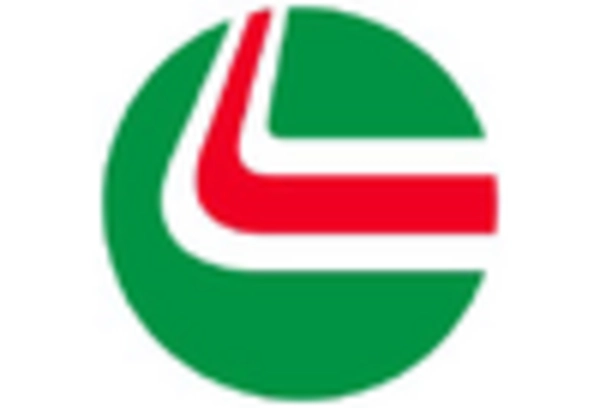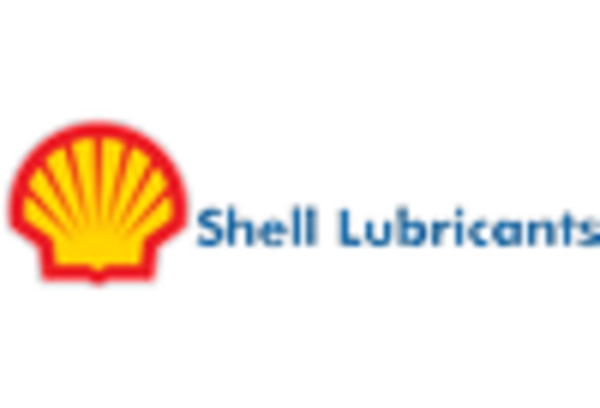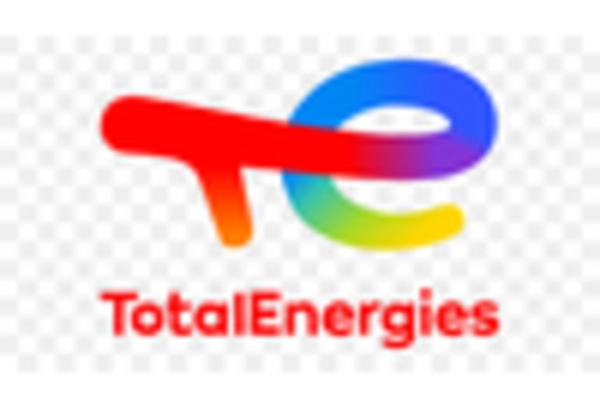Regulatory Framework
The regulatory landscape significantly influences the Germany Bio-lubricants Market. Stringent environmental regulations and policies aimed at reducing pollution and promoting sustainable practices are driving the adoption of bio-lubricants. The European Union's directives on hazardous substances and waste management have prompted industries to seek compliant alternatives, thereby boosting the demand for bio-lubricants. In Germany, the government has implemented various initiatives to support the transition towards greener products, including financial incentives for companies adopting bio-lubricants. This regulatory support is likely to enhance market growth, as businesses align their operations with environmental standards and consumer expectations.
Technological Innovations
Technological advancements play a crucial role in shaping the Germany Bio-lubricants Market. Innovations in formulation and production processes have led to the development of high-performance bio-lubricants that meet stringent industry standards. For instance, advancements in esterification and refining techniques have improved the efficiency and performance of bio-lubricants, making them viable alternatives to conventional lubricants. The market is witnessing a surge in research and development activities, with investments aimed at enhancing product quality and expanding application areas. This focus on technology is expected to drive market growth, as manufacturers strive to meet the evolving demands of various sectors, including automotive and manufacturing.
Sustainability Initiatives
The increasing emphasis on sustainability within the Germany Bio-lubricants Market is a pivotal driver. As environmental concerns escalate, businesses and consumers alike are gravitating towards eco-friendly alternatives. This shift is evidenced by a growing demand for bio-lubricants, which are derived from renewable resources and are biodegradable. In 2025, the market for bio-lubricants in Germany is projected to reach approximately 300 million euros, reflecting a compound annual growth rate of around 5%. This trend is likely to continue as companies seek to enhance their sustainability profiles and reduce their carbon footprints, thereby fostering a more sustainable industrial ecosystem.
Rising Awareness Among Consumers
Consumer awareness regarding the environmental impact of traditional lubricants is on the rise, which is a significant driver for the Germany Bio-lubricants Market. As individuals become more informed about the benefits of bio-lubricants, including their reduced toxicity and biodegradability, the demand for these products is expected to increase. Educational campaigns and marketing efforts by manufacturers are contributing to this heightened awareness, leading to a shift in consumer preferences. In 2025, it is anticipated that a substantial portion of consumers will actively seek out bio-lubricants, thereby propelling market growth and encouraging manufacturers to expand their product offerings.
Industrial Demand for Eco-Friendly Solutions
The industrial sector's growing demand for eco-friendly solutions is a key driver in the Germany Bio-lubricants Market. Industries such as automotive, manufacturing, and agriculture are increasingly adopting bio-lubricants to comply with environmental regulations and enhance their sustainability initiatives. The shift towards greener practices is not only driven by regulatory compliance but also by the potential for cost savings and improved operational efficiency. In 2025, it is projected that the industrial segment will account for a significant share of the bio-lubricants market, as companies recognize the long-term benefits of integrating sustainable products into their operations.


















Leave a Comment